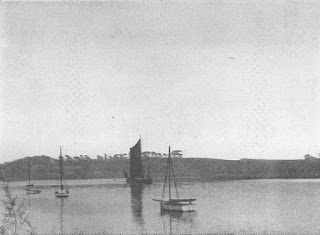The Scandal
"From 1860, FitzGerald spent a large part of his time either by the sea or on board the ocean-going yacht he had had built and named Scandal. From Woodbridge he would sail down the Deben and up the coast to Lowestoft, where he hired his crew from among the herring fishers, all the time looking for a face that reminded him of William Browne. FitzGerald sailed far out into the German Ocean, and, just as he had always refused to dress for particular occasions, so, insteading of donning one of the newly fashionable yachting outfits, he would wear an old frock coat and a top hat tied fast. The sole concession he made to the stylish appearance expected of a yachtsman was the long white feather boa which he reportedly liked to sport on deck and which fluttered behind him in the breeze, visible at a good distance. In the late summer of 1863, FitzGerald decided to cross to Holland in the Scandal in order to see the portrait of the young Louis Trip, painted by Ferdinand Bol in 1652, which was in the museum in The Hague. Upon arrival in Rotterdam, his travelling companion, one George Manby of Woodbridge, persuaded him to view the great seaport first." (p. 204)
Here, I'm making my own oblique connection to the poem by Peter Abelard, Heloise, for which I set to music in the late 90s, and re-using the closing chord sequence.
Edward FitzGerald was born Edward Purcell at Bredfield House in Bredfield, around 2 miles north of Woodbridge, Suffolk, England, in 1809. In 1818, his father, John Purcell, assumed the name and arms of his wife's family, the FitzGeralds.
Places: Crown Hotel Bar, Woodbridge, the fields from the A12 towards Bredfield (where FitzGerald was born in 1809), Boulge church is his burial place. His most famous work was his translation of The Rubaiyat of Omar Khayyam.



Comments
Post a Comment